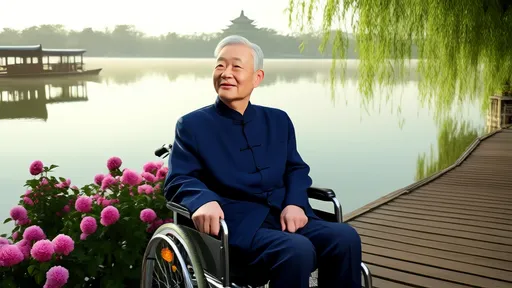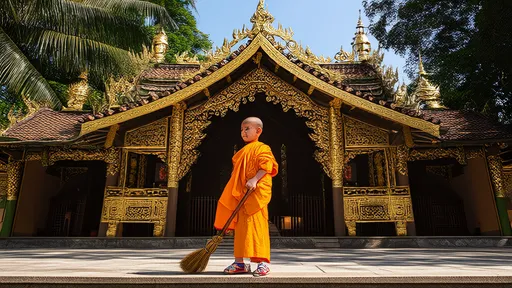In the heart of Japan’s urban landscapes, traditional sentō (public bathhouses) stand as cultural relics, offering more than just a place to cleanse the body. These communal spaces have long served as social hubs where neighbors gather, families bond, and strangers share quiet moments of relaxation. Yet, for all their inclusivity, one rule has remained steadfast for decades: no tattoos allowed. This policy, deeply rooted in historical stigma, continues to spark debate as Japan navigates the tension between tradition and modernity.
The origins of Japan’s tattoo taboo trace back to the Edo period (1603–1868), when authorities began marking criminals with indelible ink as a form of punishment. Over time, these markings became associated with rebellion and deviance, a perception later reinforced by the yakuza, Japan’s organized crime syndicates, who adopted elaborate full-body tattoos as symbols of loyalty and endurance. By the 20th century, tattoos were so strongly linked to criminality that businesses—especially those emphasizing cleanliness and purity, like sentō—banned them outright to maintain a "wholesome" atmosphere.
For foreign visitors, Japan’s tattoo policies often come as a shock. In many Western countries, body art is celebrated as self-expression, with no inherent ties to illegality. But in Japan, even small, non-yakuza-related tattoos can lead to denied entry at sentō, onsens (hot springs), gyms, and swimming pools. The irony is palpable: while international tourists flock to Japan to admire its rich history—including traditional irezumi (tattoo artistry)—many find themselves barred from experiencing a quintessential aspect of Japanese daily life due to ink on their skin.
Change, however, is creeping in. As Japan prepares for an influx of tourists post-pandemic and ahead of events like the 2025 Osaka Expo, some sentō owners are reconsidering their stance. A handful of bathhouses in Tokyo and Osaka now permit tattooed patrons, provided they cover their ink with waterproof patches or visit during designated hours. Others have gone further, openly welcoming tattooed guests—a move driven partly by economics. "Younger generations don’t visit sentō as often as their grandparents did," explains one owner in Kyoto. "If we don’t adapt, we’ll disappear."
The shift also reflects a broader generational divide. Older Japanese, raised during the peak of yakuza notoriety, still view tattoos with suspicion. Meanwhile, younger locals increasingly see them as fashion statements, with celebrities and athletes sporting subtle ink. This disconnect is evident in surveys: while 56% of Japanese in their 20s support allowing tattoos in sentō, only 29% of those over 60 agree. The gap underscores the challenge of reconciling deeply ingrained cultural norms with evolving attitudes.
Behind the debate lies a quieter struggle: the plight of Japan’s tattoo artists. Once revered as masters of horimono (traditional hand-poked tattooing), many now work in legal gray areas. In 2020, Osaka’s High Court ruled that tattooing without a medical license was illegal—a decision that threatened to criminalize centuries of artistry. Though enforcement remains lax, the ruling sent shockwaves through the community. "We’re not criminals," insists a third-generation horishi (tattooist) in Yokohama. "We’re preserving a craft that’s part of Japan’s heritage, even if some people refuse to see it that way."
Perhaps the most poignant twist in this saga is the global fascination with Japanese tattoo culture. Museums from London to Los Angeles have hosted exhibitions on irezumi, celebrating its intricate motifs of koi fish, cherry blossoms, and mythical beasts. Instagram pages dedicated to Japanese-style tattoos boast millions of followers. Yet within Japan, the art form remains marginalized—a contradiction that hasn’t gone unnoticed. "Foreigners appreciate our traditions more than we do sometimes," muses a sentō employee in Hiroshima. "It makes you wonder who’s really keeping these cultures alive."
As dusk falls over Tokyo’s Shinjuku district, the neon lights of modern Japan flicker to life. Inside a nearby sentō, steam rises from the baths as patrons scrub their backs and soak weary muscles. The rules here remain unchanged: no tattoos, no exceptions. But outside, a new generation walks the streets with inked sleeves peeking from their shirts, their very presence a quiet challenge to the old ways. The future of Japan’s sentō culture hangs in the balance—not just as a question of policy, but as a reflection of how the nation chooses to define itself in an era of globalization.

By /Aug 13, 2025

By /Aug 13, 2025

By /Aug 13, 2025

By /Aug 13, 2025

By /Aug 13, 2025

By /Aug 13, 2025

By /Aug 13, 2025

By /Aug 13, 2025

By /Aug 13, 2025

By /Aug 13, 2025

By /Aug 13, 2025

By /Aug 13, 2025

By /Aug 13, 2025

By /Aug 13, 2025

By /Aug 13, 2025

By /Aug 13, 2025

By /Aug 13, 2025

By /Aug 13, 2025

By /Aug 13, 2025

By /Aug 13, 2025